You are currently browsing the category archive for the ‘cycling’ category.
I started out from Schenectady, eager to reach the end of the trip. Improvised art exhibits covered fences in several areas of this stretch of the trail. I applaud the effort, but it seems an attempt to gild the lily or paint the abalone. I’m not disparaging the art, just the location.
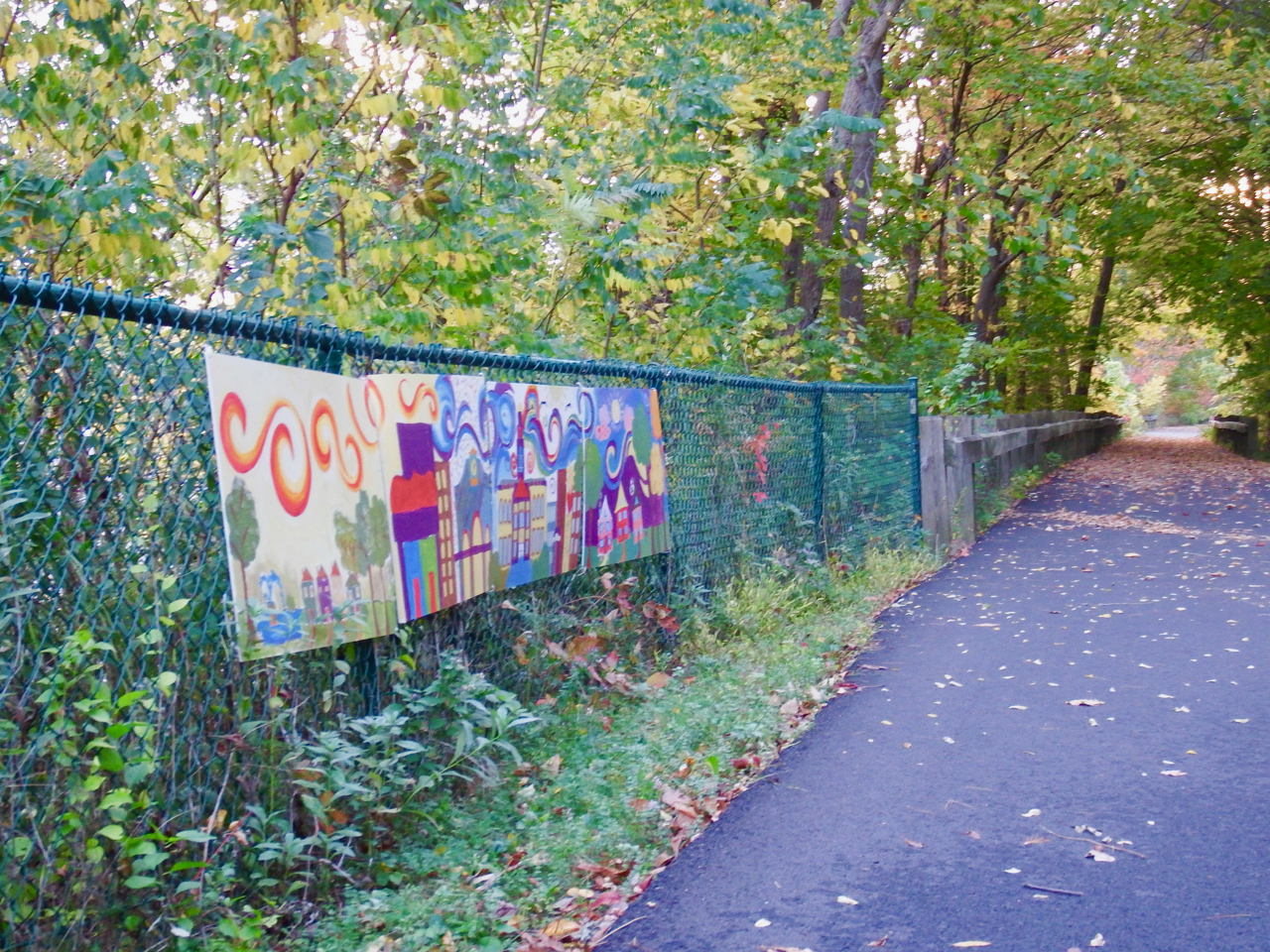
The text here is very clear; don’t leave the bike trail.
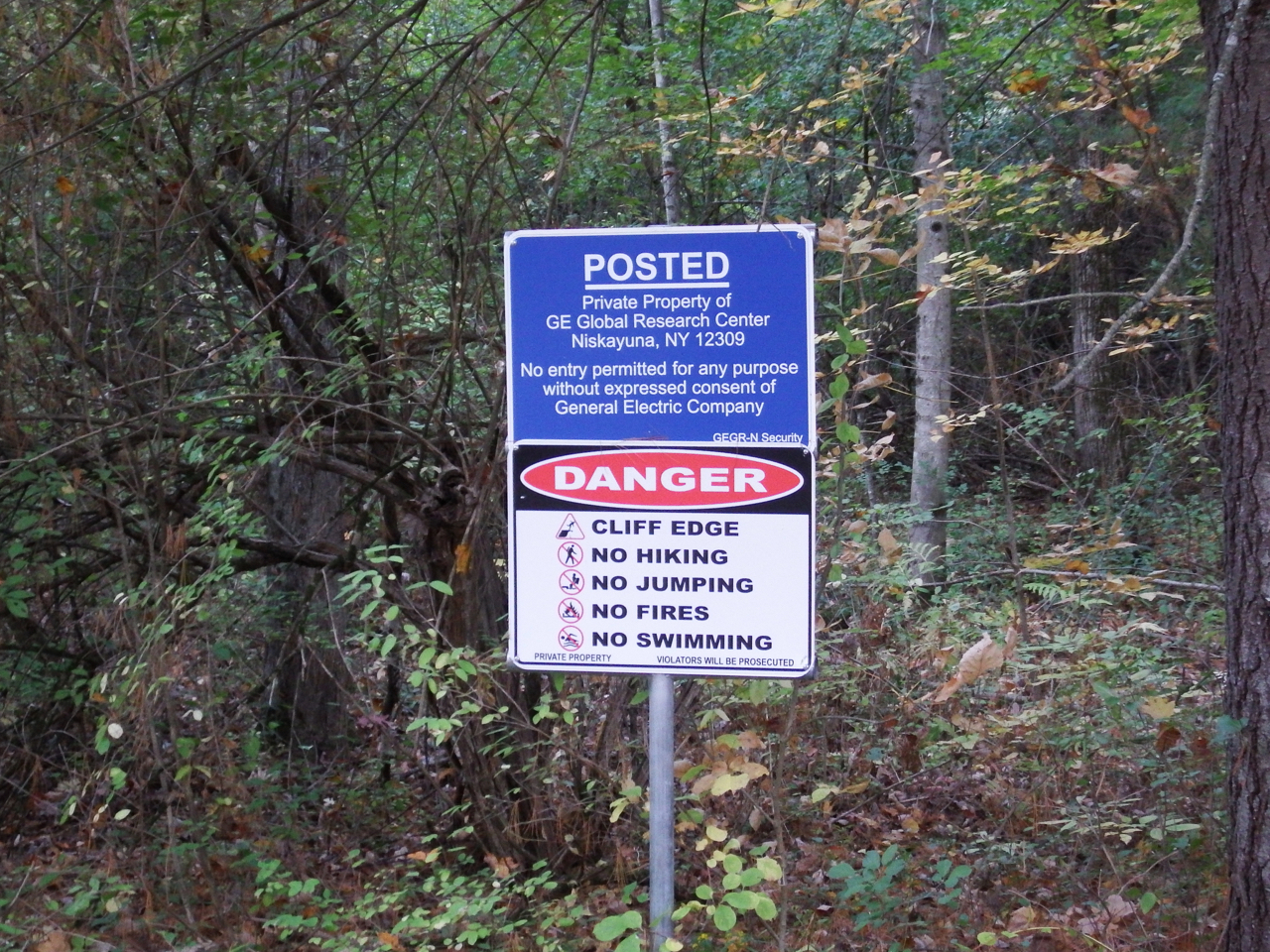
Besides a steep hill and cliffs, GE Global Labs and Knolls Atomic Power Labs lie beyond the fence and foliage. A lot of deer grazed there also.
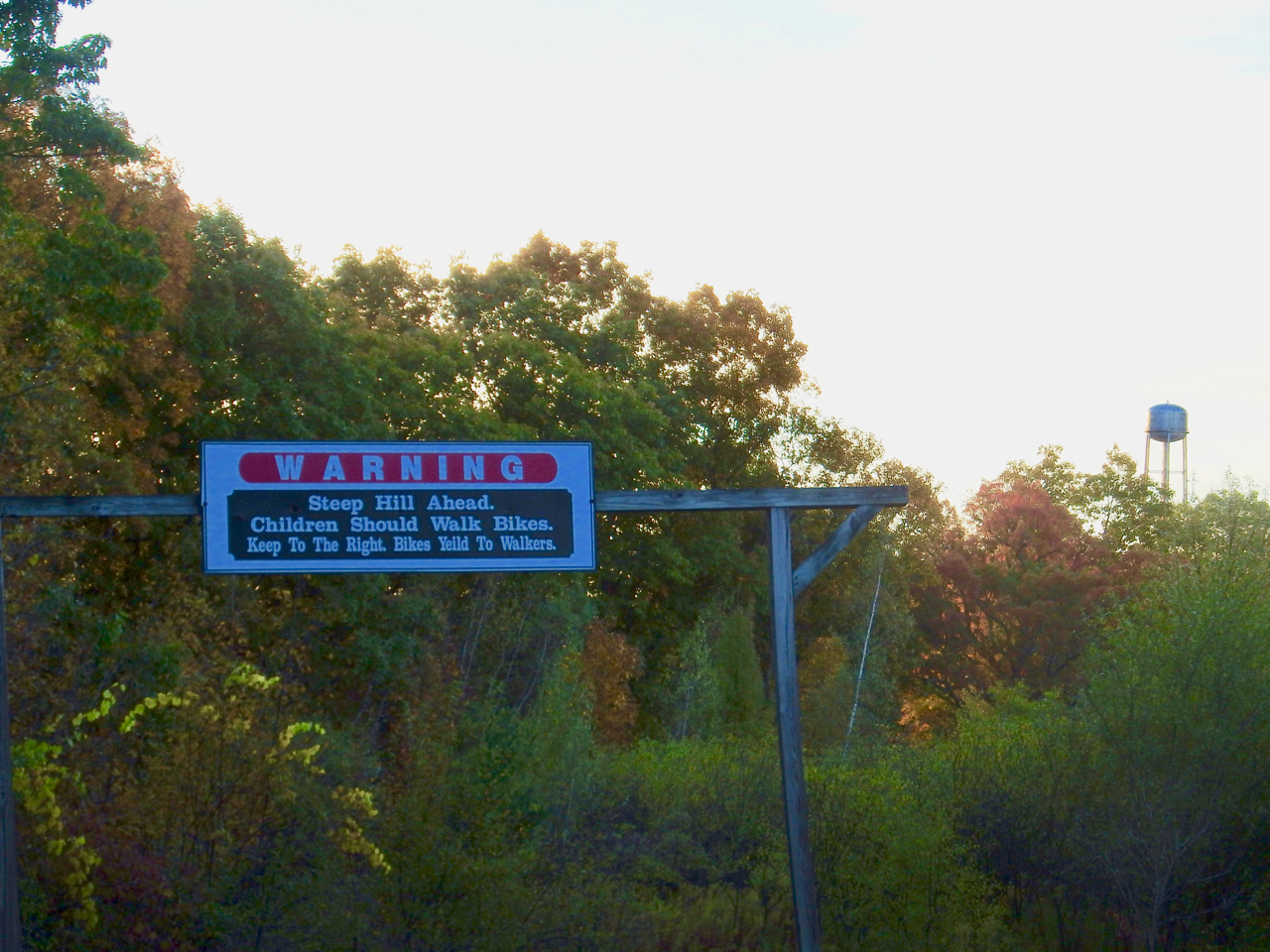
If I read the map correctly, Jeff Blatnick Park has been built on a former landfill.
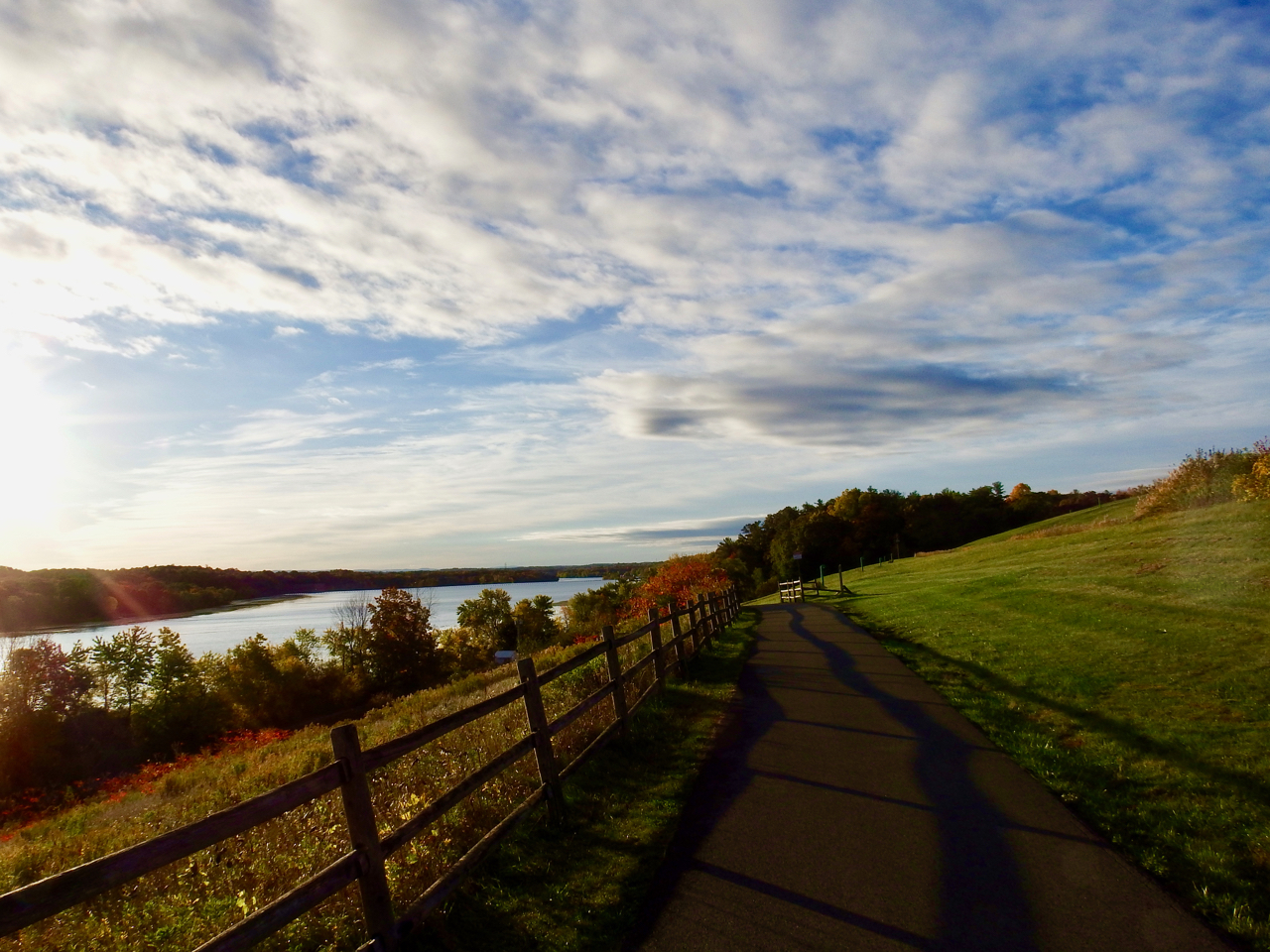
It is a very pretty spot.
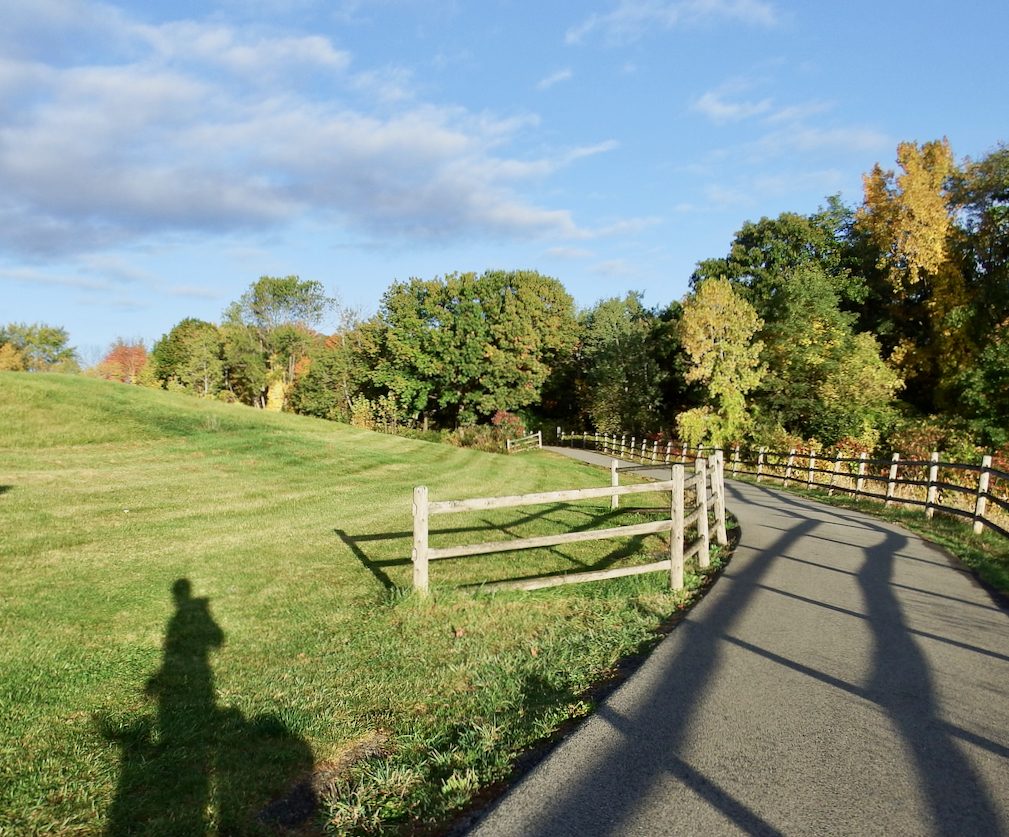
Trees here, as they do on downstate parkways, mask the subdivisions on either side.
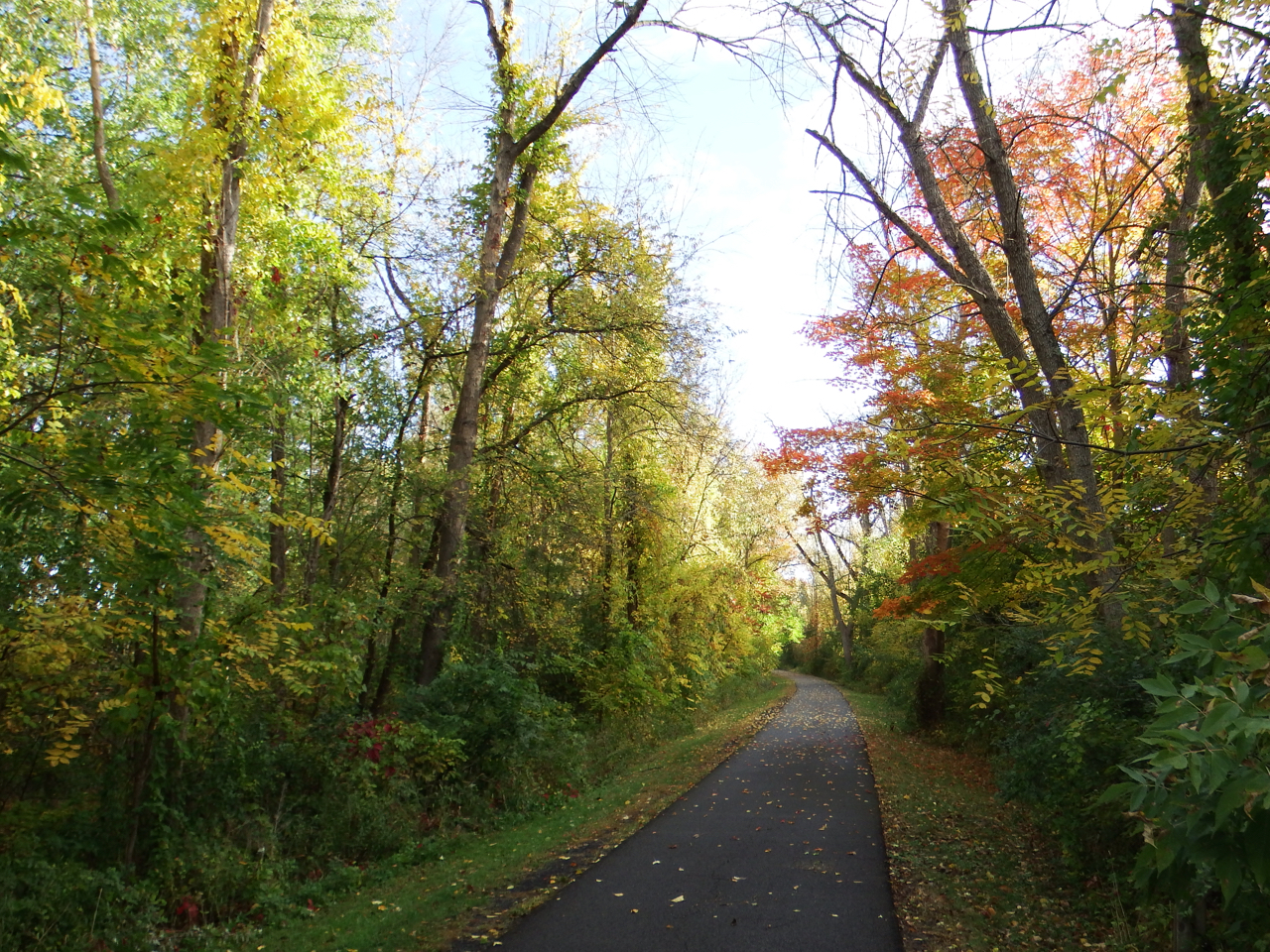
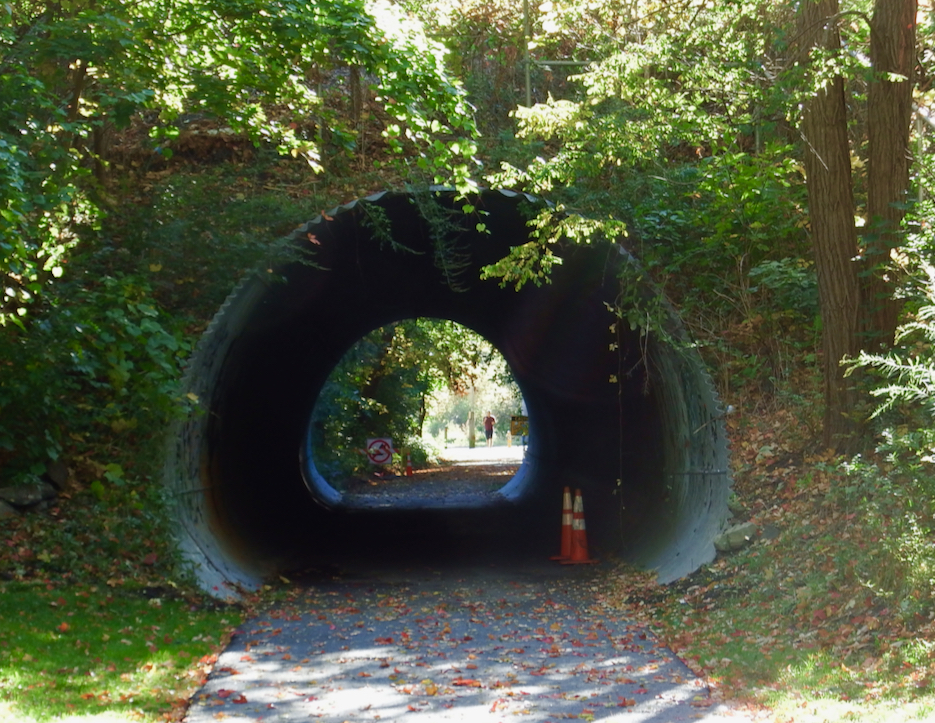
If the Empire State Trail here follows the D&H railbed, then this is Black Bridge between Green Island and Van Shaick Island.
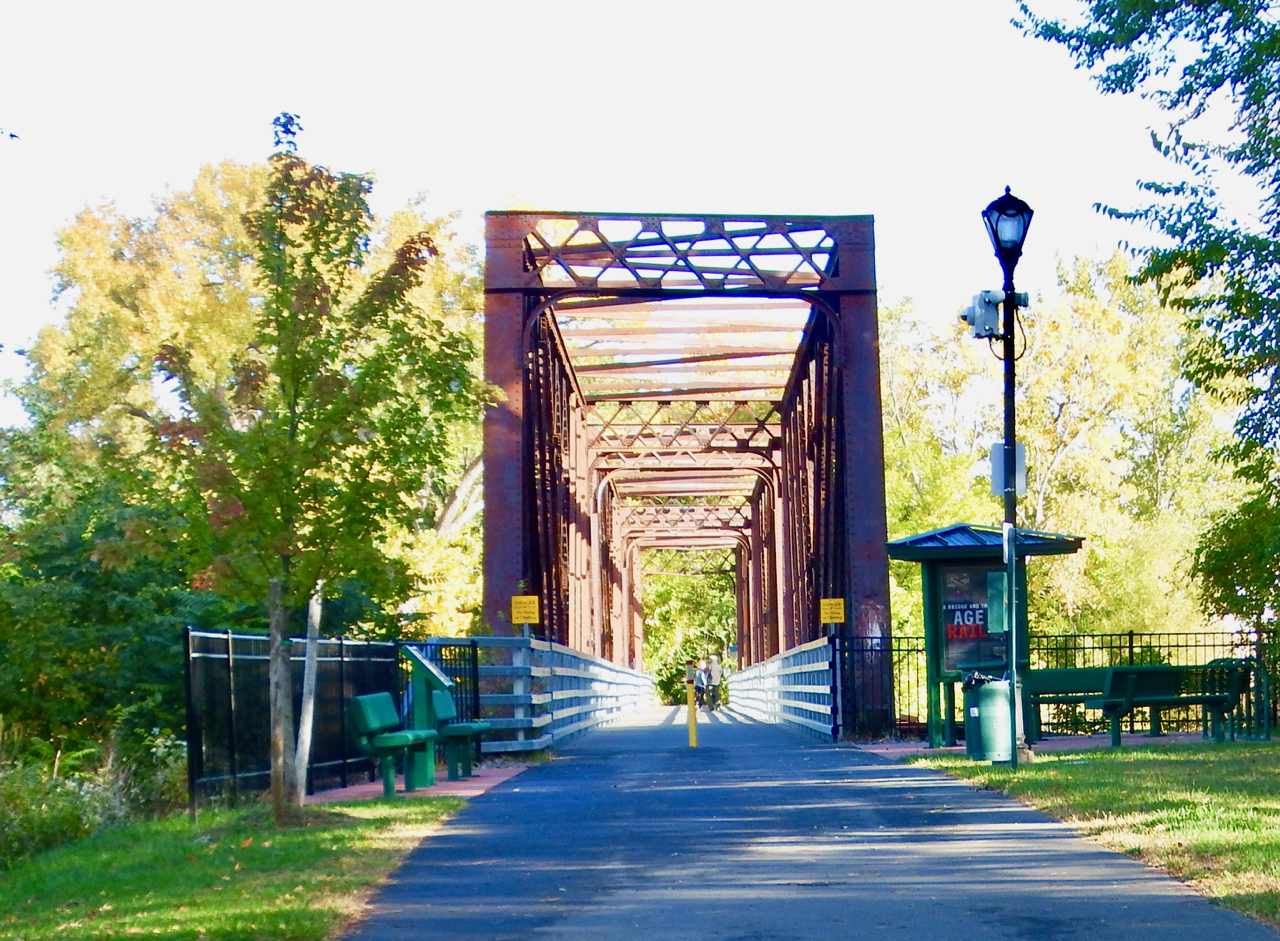
The storm still had obstacles for me . . . hastily being cleared by good citizens, they called themselves. I was appreciative.
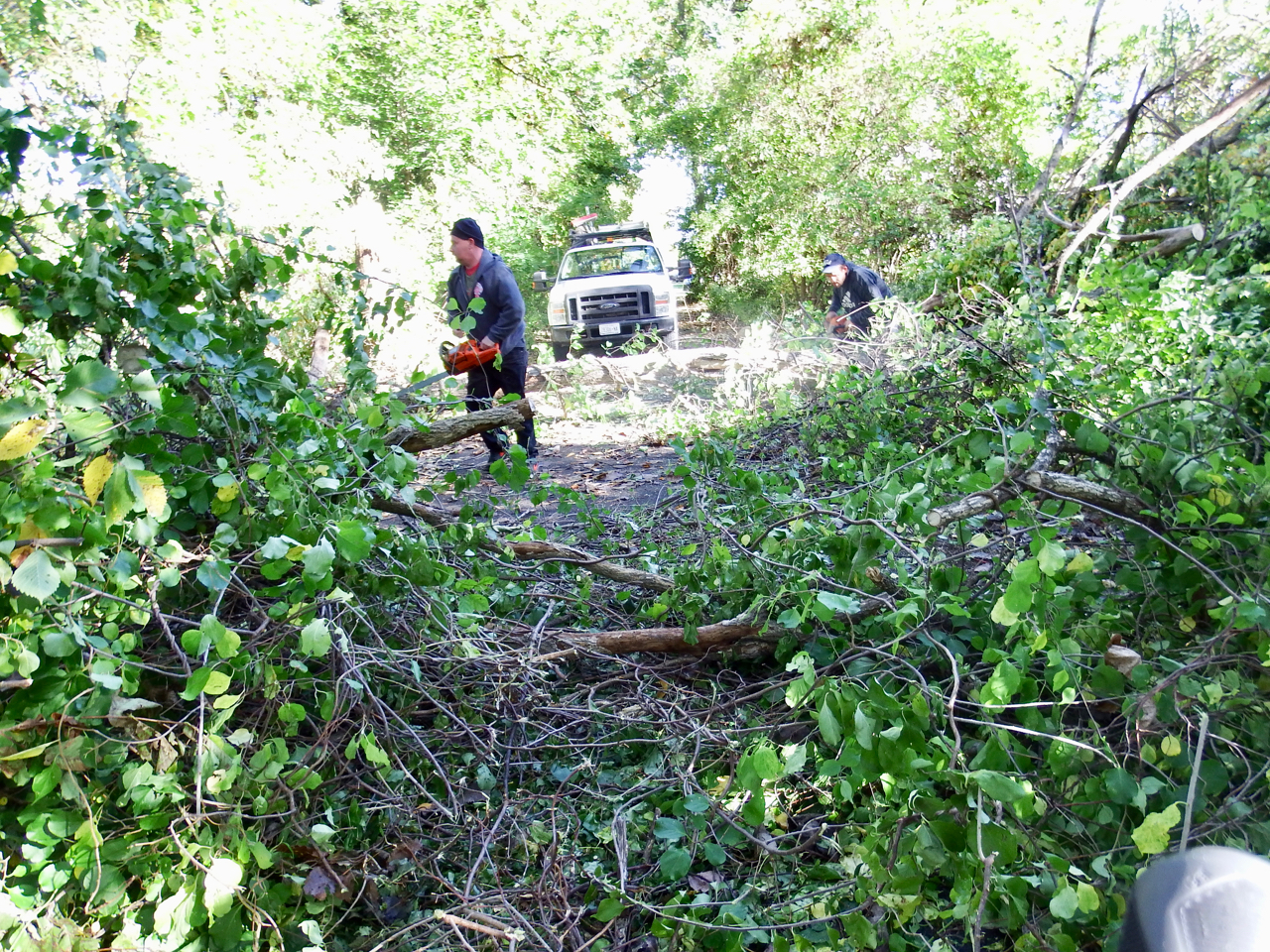
And then, I crossed the Second Street Bridge in Waterford, and after 334 miles, it came to an end. I realized later that the gent who took my photo was a vendor at the Waterford Farmer’s Market. I still craved an apple, but his were all sold out.
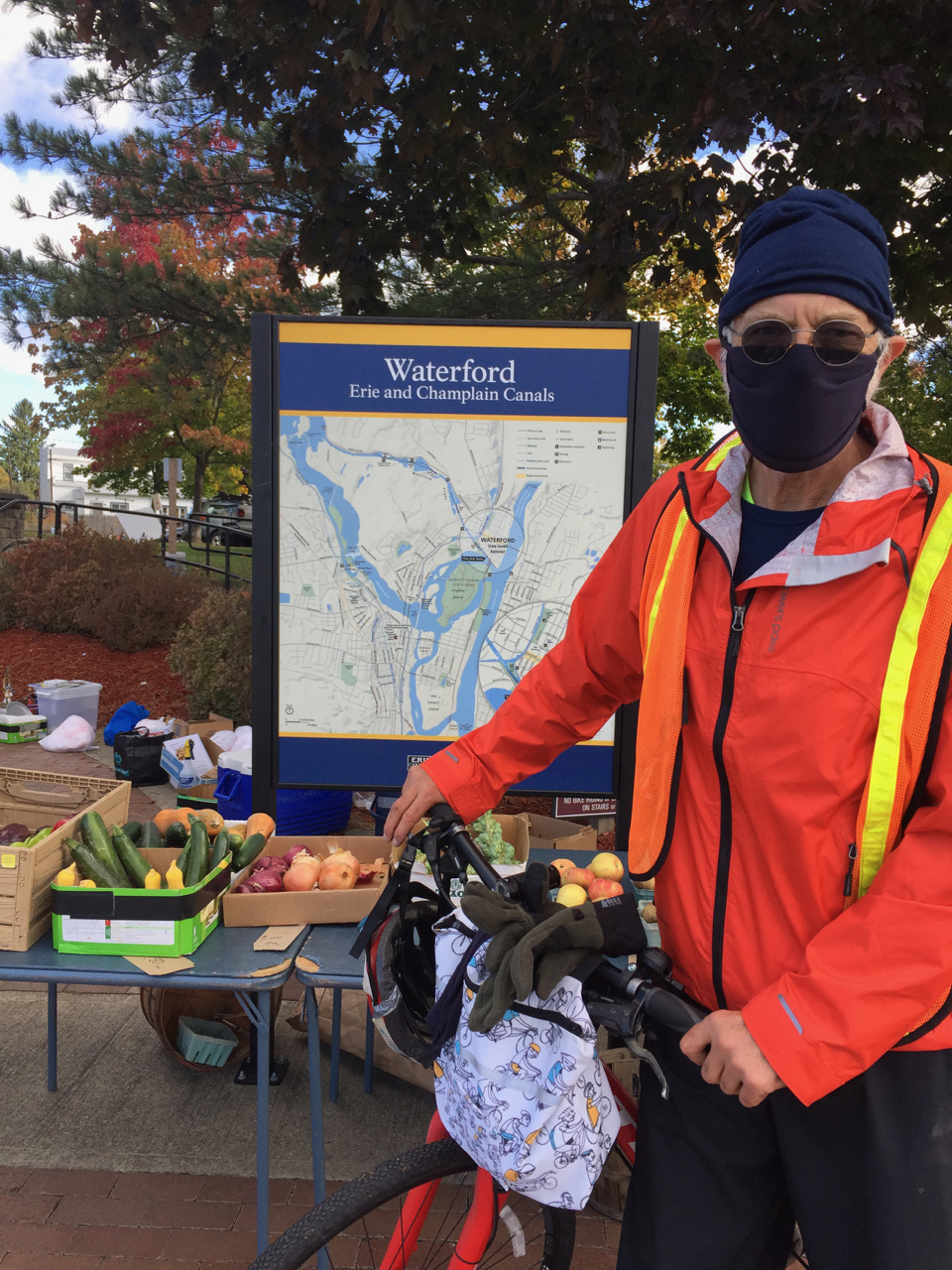
Conclusions?
- It felt very good to complete. I talked with very few people, making it ideal social distancing. Inhaling all that forest-filtered air does the body good, even my 1952 body. I actually set out, doing so publicly, not convinced that I’d complete the trip. Doing it publicly made it harder to bail out of the mission of completing it.
- Fall is a great time of year to bike it. I sweated, as one would cross country skiing. Summer heat might be intolerable.
- It was not about speed or racing. The journey was paramount, but once underway, I stopped more often for gulps of water than for taking photos. I saw many beautiful things I did not photograph. Most of my focus was up to 50′ ahead of the bike, as I scanned for holes, root heaves, and sticks. I also saw many historical signs I raced past. Momentum eclipsed puzzling out historical signage; maybe I was wrong in making that choice, but I had done my history homework in advance.
- My interior sentience was not about solving the world’s or the state’s problems or hearing music; rather, when thoughts coursed, they were about refuting political slogans I saw on too many signs. The wooded areas were more inspiring, even in their non-verbal way. If I do the Appalachian trail, I hope I won’t see those signs. Next year those distractions will be gone.
- Calling it the “canal trail” is misleading. “Rail and canals trail” as a name might be more indicative of what you’ll see. Having transited the canal to a terminus about 20 times, I know what the “canal view” is. Here’s the virtual tour I put up after numerous boat trips. A bike trip does not get you a boat view. It gets you a bike view. I’ve discovered a new curiosity about the trains that ran some of these corridors. Here‘s more on the West Shore RR.
- If you missed it before or if I misquoted myself since, my total was about 334 miles which I did in 53.5 hours over a seven-day period. The mileage is calculated from a map, not an actual recording device. The fourth day I made no miles because of the storm. The 53.5 hours is elapsed time from morning departure until end of day leaving the trail, i.e., the clock kept ticking while I did things like take a break as in Little Falls or wait for the electrical line repair crew clear a live wire off the trail
- Next year the trail will be better.
- Thanks for following along. I’m not a cyclist really. I don’t own a bike. The Trek I used is available through Oswego Expeditions. But if you have questions about the trail, I’m happy to consult.
- Solo v. groups? I was fine doing it solo. One benefit of a solo journey is that I was more disposed to enter conversations with strangers, and I met some interesting ones. That is less likely to happen if you’re boating through.
- Now . . isn’t this blog called “tugster”? This hiatus has reached its end. Back to “tugster” next.
Palatine Bridge is where the lodging was, but the trail runs on the south side here, so when I departed at a bit past 0700, I needed to cross back to the Canajoharie side and then head east. In the middle of the river/canal, a boat heads east as well, to get out of the canalized river before the locks close . . . a few days hence. As I write this, the canal has closed for the season. The photo below was taken in the same location as photo 4 here.
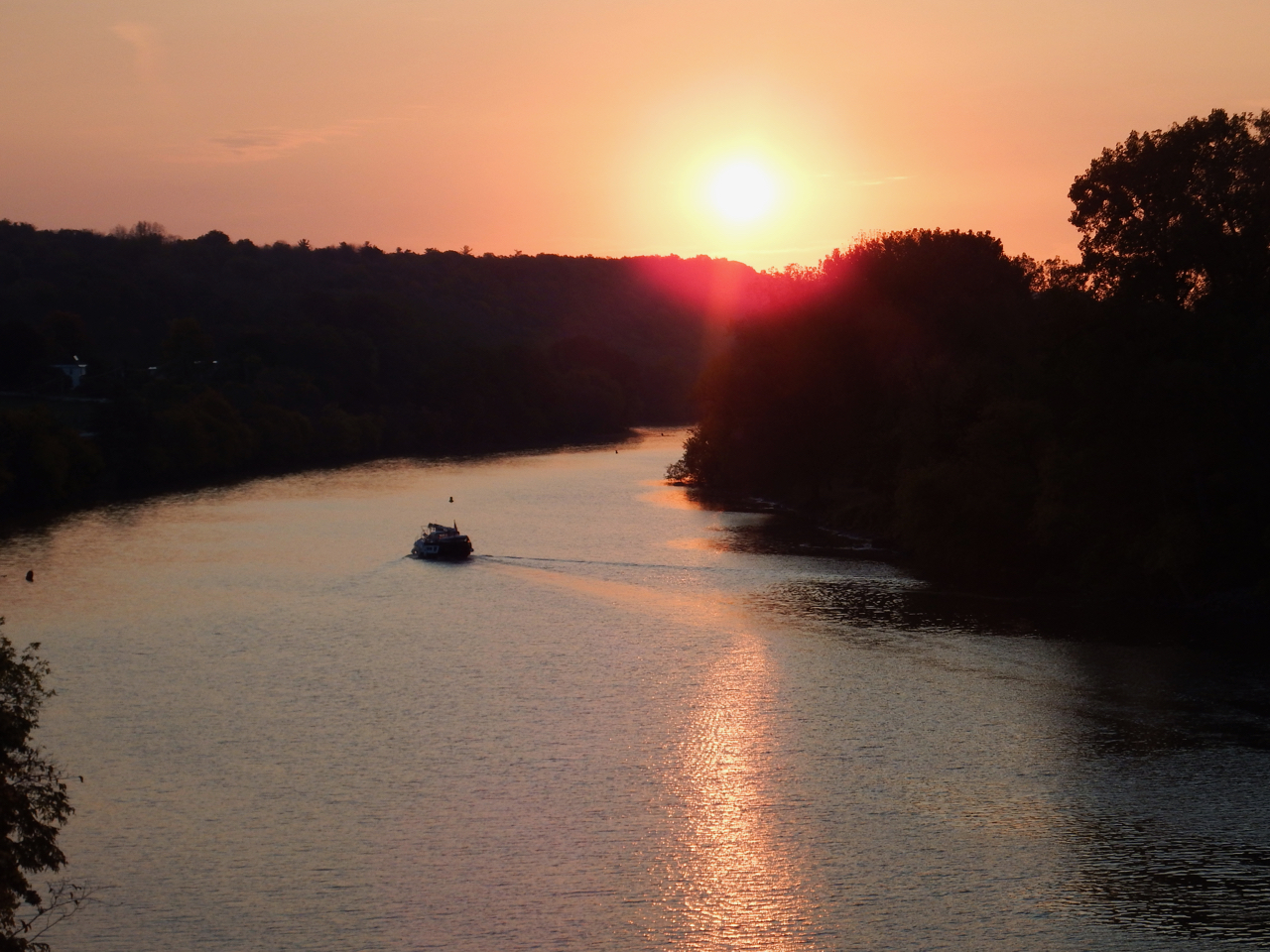
Visible to the east of Canajoharie is the Noses, a geological fault, the gap that has made this a trail since time immemorial. See the fog between the two ridges?
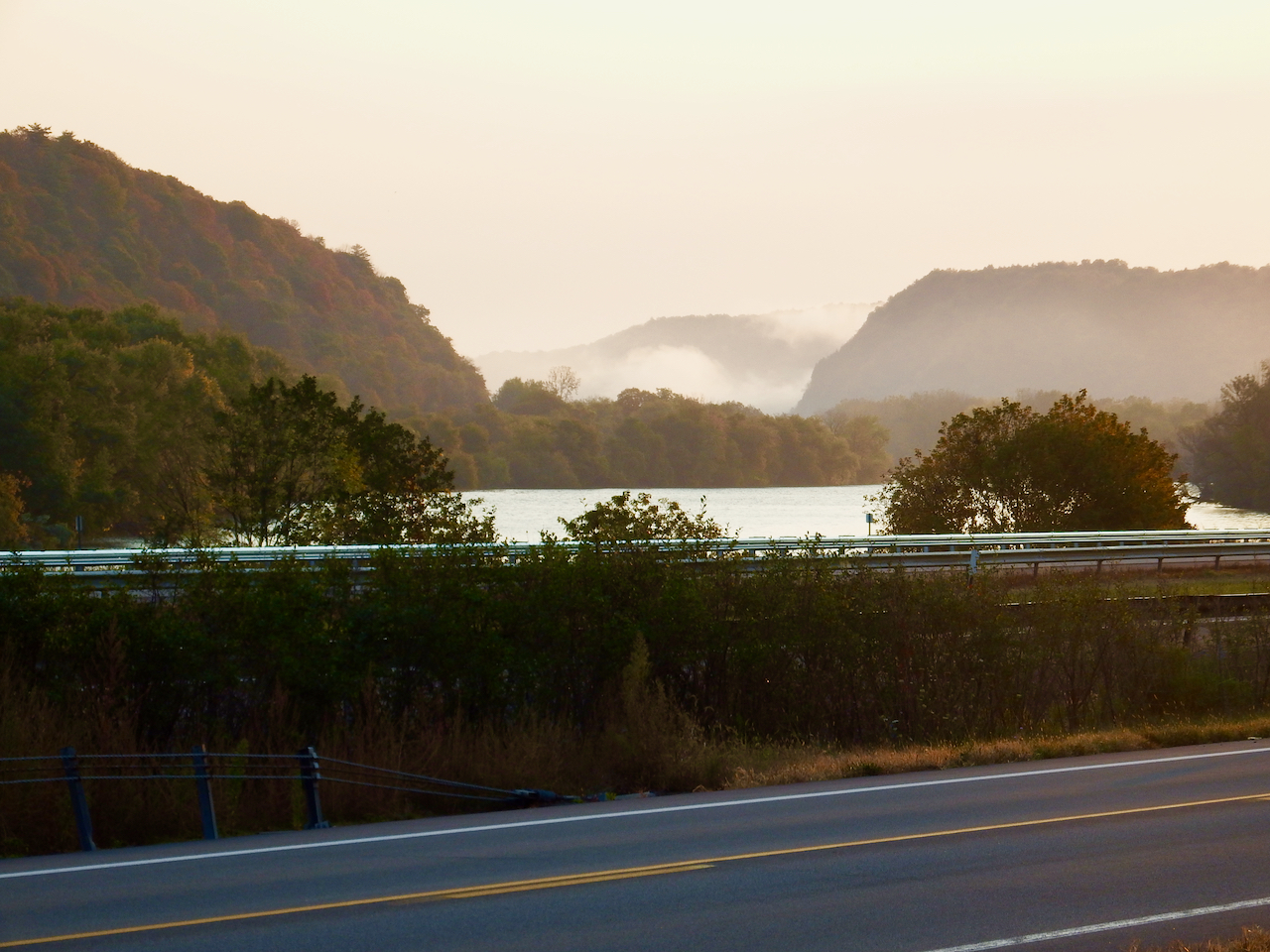
Here’s a shot from the Thruway a bit to the west, but the photo illustrates the localization of fog in the Mohawk valley in early fall . . . the water is still warm whereas the air is at least 20 degrees cooler. The fog effectively illustrates the water course. Yes, I have a crack starting in my windshield.

Back to the gap, I took this photo from the bike trail, the southernmost thoroughfare through the gap. Next is 5S, next are the four lanes of the Thruway aka I-90, next . . . where the boat is is the Mohawk, and beyond that and not visible in this photo are the existing railroad–Amtrak and freight–and then 5N. The vessel is Hornblower Express, being repositioned to Toronto, also getting through the system before it closes for the season

The bike trail here looks like this.
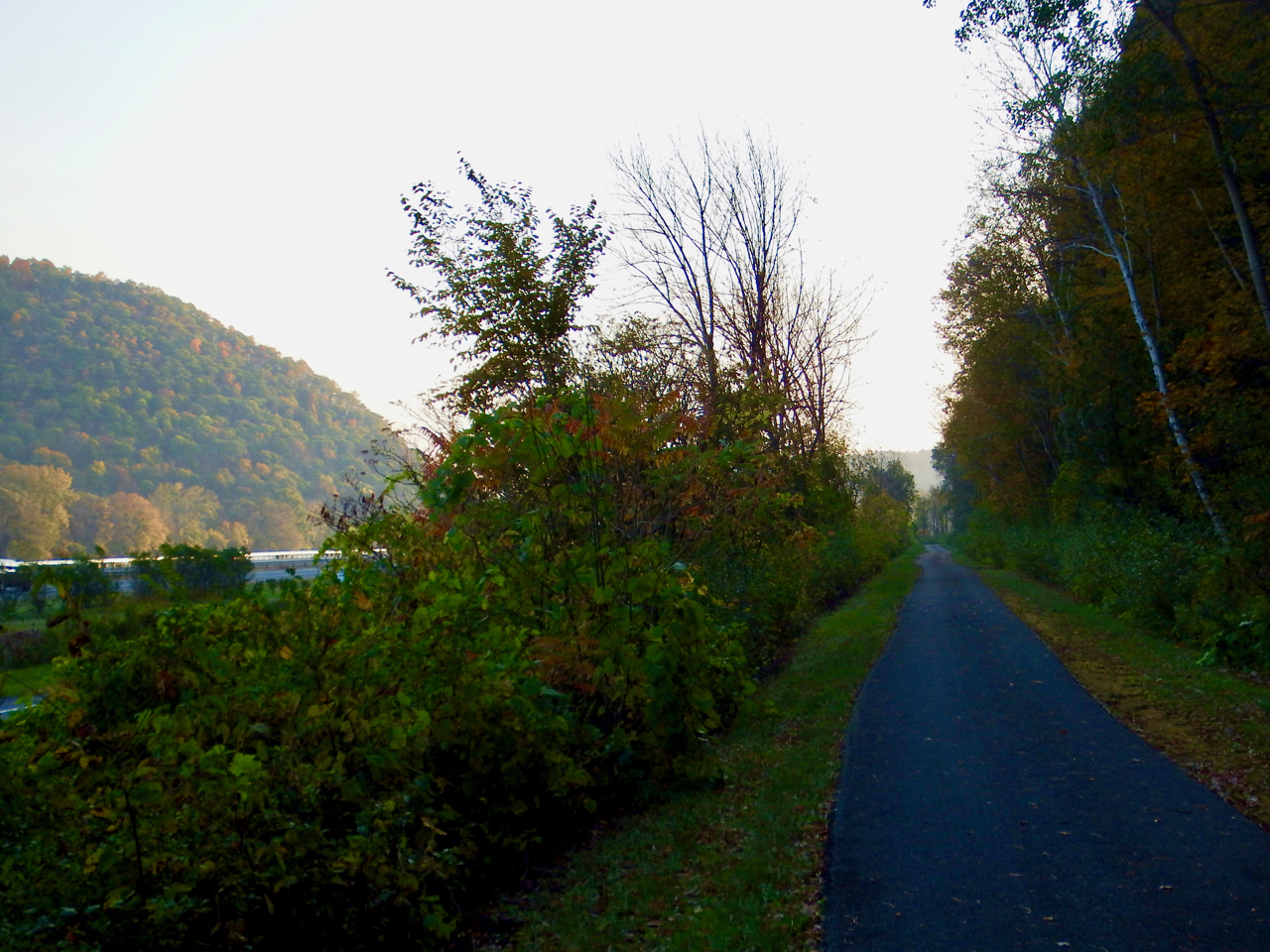
The next town headed east is Fultonville, across the river from Fonda. Traveling on the water, you barely sense Fultonville, but named for the artist and tinkerer associated with steam-powered river transportation, this town has been here since the opening of the Erie Canal in 1825. Below, that’s the Fultonville Reformed Church.

A bit east of the church is the old West Shore freight house, a remnant of the previous life of the bike trail . . . once the railed trail

A half dozen miles to the east, we cross Schoharie Creek. That’s the Thruway bridge in the distance; Schoharie Creek is the Mohawk’s largest tributary. The Mohawk and lock E-12 lie behind the photographer here.

Still see the Thruway bridge in the distance? The bridge serving as my photo platform and bike trail here no longer serves cars and trucks . .

As I rode I craved fruit. This time of year, the wild grapes are very tasty.
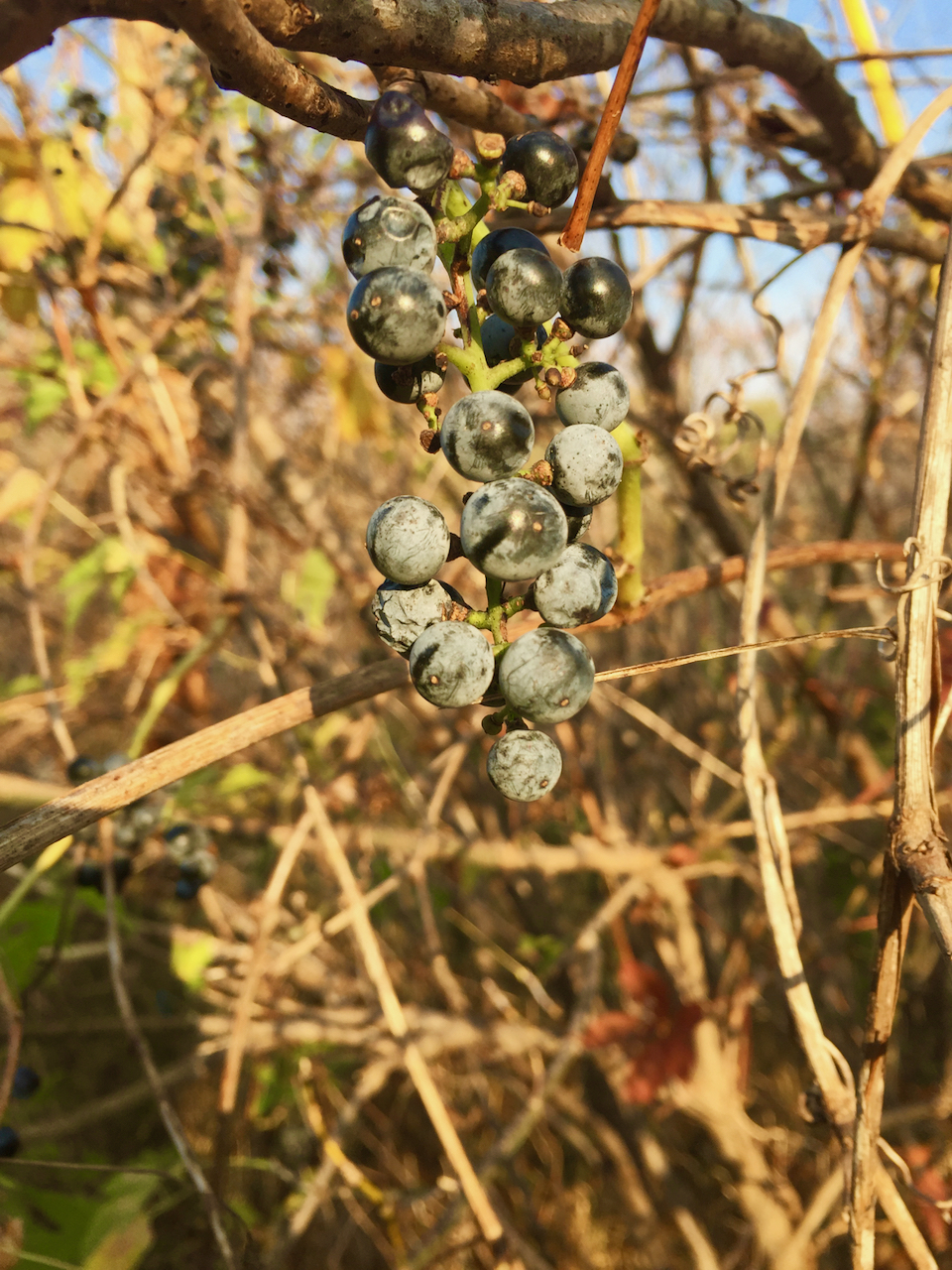
A half dozen miles east of Schoharie Creek is the old lock 28 and Yankee lock. The ridge in the distance is the location of Amsterdam NY.

Here that ridge continues as part of western Amsterdam NY. Note the rail traffic on the opposite side of the Mohawk? Pink containers come from pink ships . . .

A half dozen miles east of Amsterdam is Rotterdam Junction NY, the home of the Mabee farm, and this the oldest house extant in the Mohawk Valley. Adjacent to it is the old Mabee family cemetery. I first came to the Mabee farm more than a decade ago for the building and splashing of Onrust.

And another stretch beyond that, just before lock E8 is the Hungry Chicken Market and country store in an excellent location not 500 feet from the bike trail. I knew I was approaching my day’s objective . . . Schenectady, so it was a good place to have a snack before the end of the day’s ride.

That’s it for reportage and photos from my day 6. I could have continued on to Waterford that day, but I was ready for a shower and a rest.
Leaving Rome crossing the contemporary Canal to follow the south side of the canal for a while. That building is in what’s called Rome’s Bellamy harbor and just before that greenish guard gate, that’s the confluence of the canal and the Mohawk River, which enters there from the right. You’ve seen that guard gate once before here.

Rome is the summit between two watersheds, so water transport for millennia made a short portage here. To the Haudenosunee, this place was called deo-wain-sta . . . or carrying place, aka Oneida Carry.

The trail to Oriskany was muddy from the earlier rains, made worse for bikes by a four-wheeler that had gone through. I grant that the four-wheeler may have been looking for downed trees.

But the sun came out . . . and past the swamps that bogged down General Herkimer back in 1777, the trail follows directly south and adjacent to the contemporary canal.


Governor Roosevelt waits in Marcy, lock 20. She’s been working since the late 1920s.

Here’s Tender #4 on the hard and Governor Roosevelt in the distance.

I had a big surprise when I approached Utica’s Genesee Street bridge, and saw Jeff, captain on Urger when I worked on her, part of a safety meeting on shore before they headed onto the boats for dredging.

South of Herkimer/Mohawk after lots of miles from Utica on route 5N, I passed Fort Herkimer church, among the oldest churches in the US.

Having watched this section of the trail being build the past few years, I’d been looking forward to riding it, just above lock E18.

I got to Little Falls, my easy goal for lodging, but since it was noon that I got there, I rested for an hour, and then I pushed on.

The trail east of Little Falls is spectacular.

The storm I mentioned as having kept me inside the day before had done a lot of damage, downed trees and power lines.

This Holland Power Services crew had come from New Brunswick to assist. Their safety flagger stopped me for half an hour while this live wire was re-attached to the pole.

Once I got the all-clear, I was on the road again . . . well, on the trail. I passed tug Port Jackson at lock 15 in Fort Plain, and made for my day’s goal, Canajoharie and Palatine Bridge.

Report and photos, WVD, who had completed a 59-mile day.
I spent two nights in Camillus because the forecast saw high winds and rain. A day in bed did me good, although I felt a bit guilty until the rains came. In early afternoon, when I took the photo below, I took this color photo from my window, feeling happy to be indoors.

The next morning, headlamp on, I made for the bike trail. I was crossing the main rail line when the sun rose. After several miles of riding, I crossed it again because of an unmarked detour on the trail. A trail bridge at the SW end of Onondaga Lake was under construction or repair, which led to a long back track. For a story highlighting the connection Syracuse once had to tide-and-salt water, click here and scroll to the bottom.

I had google maps as well as Gaia GPS, and it cost me a lot of data, but I made it through the labyrinth that was Syracuse. Highlights were the Niagara Mohawk Building, and

a short revisit outside the Erie Canal Museum. Significant is the fact that Erie Boulevard, seen to the right on the photo below, is a portion of the 19th century Erie Canal that has been filled in. Other “Erie Boulevard” locations in NYS are also atop these filled waterways.

Once east of the streets of Syracuse and eastern suburbs, I made it to the 36-mile Old Erie Canal State Park, a welcome relief, and a must-pedal area of the trail. The trail lies atop the towpath, and long stretches of extant canal have water in them. I saw folks fishing.

A few years ago in the fall I’d visited Chittenango Landing Canal Boat Museum, where I took these photos of circus life on the canal. There’s much more to see as well. For now, I had miles to go . . . so andiamo.

I stopped to see vestiges of 19th century industry, like this clay pot factory, located for easy and safe transport of the fragile cargo. Now . . . we choose to use plastic ones . . .

Onward . . . I zoomed through Canastota, my “easy goal” for the day. Then Icrossed the NYS Thruway and headed for Rome. The trailside of the Verona town buildings made for a “canvas” for muralists. The Stark’s Landing reference means that this location a century and a half ago served as a transport and cargo handling center.

Now this section of the canal was empty and although land was farmed, no indication remained of the previous supply chain modes.

Eventually I crossed the contemporary canal at lock 21, passed the junction lock, and followed the NE bound trail into Rome. For some good views and the “junction lock” and the NE bound trail, click here and see photos 3 and 4 from last.

It was another 50-mile day . . . technically longer given the detour just west of Syracuse city.
Report and photos . . . WVD.
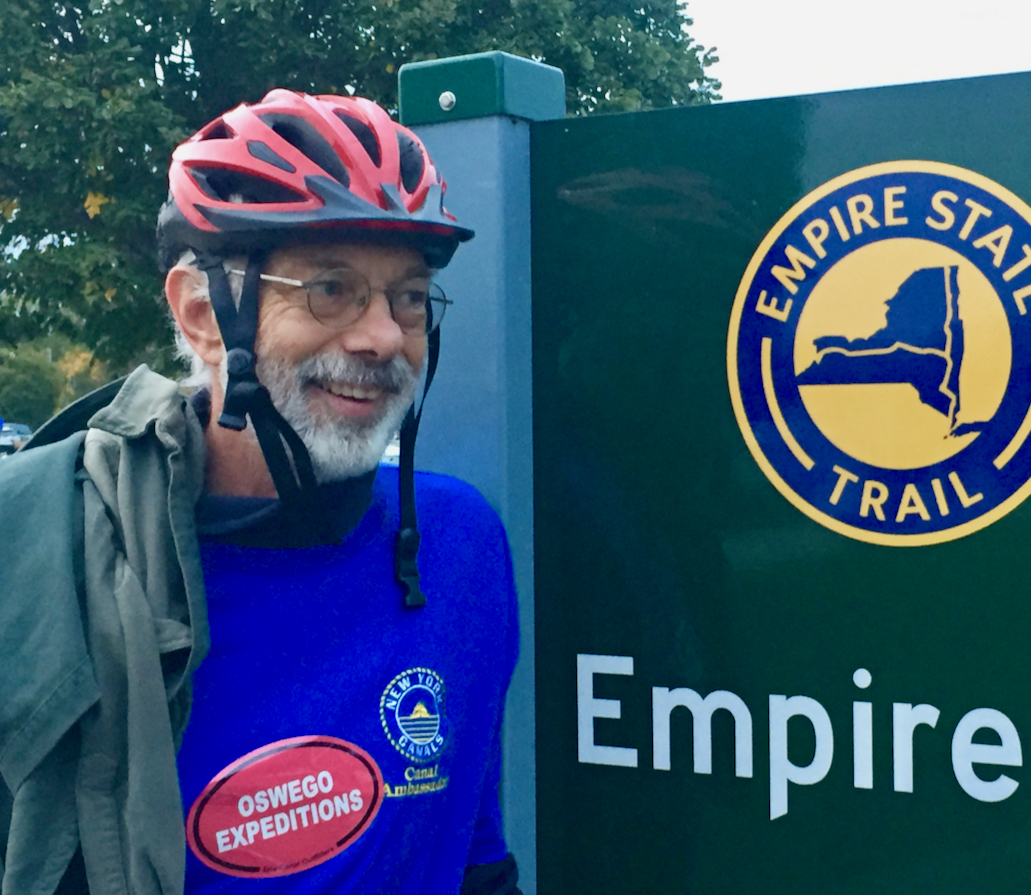
In that case, en avant, I should fuel and lubricate the tires. Sunday 0735.

This is the look of focus! I soon stopped and put on my gloves.



I encountered three types of surface . . . the cinders path increased effort for the “hybrid” tires I used. Just roughly speaking, I’d say roughly 35% of trail now is cinders, another 40% is paved, 20% is “share the road” street and highway, and the rest is grassy. Work is ongoing, so next year the percentage of paved portions will be higher, and grass and highway lower. The best thing about towpath and rail trails is that they are straight and level.

This last photo of tug Pittsford I took in Albion NY, where I spent night one, in a motel. I really needed a hot shower every night.
All photos, WVD, who returns to the sixth boro and focus on its traffic after this report.
A final word . . . I’m not a regular cyclist. Prior to this trip, I’d not sat on a cycle seat for over five years. I am, however, an avid walker. My bicycle was a Trek Dual DS2 provided by Oswego Expeditions, a very good bike and outfitter. Thanks, Jennifer.




Recent Comments